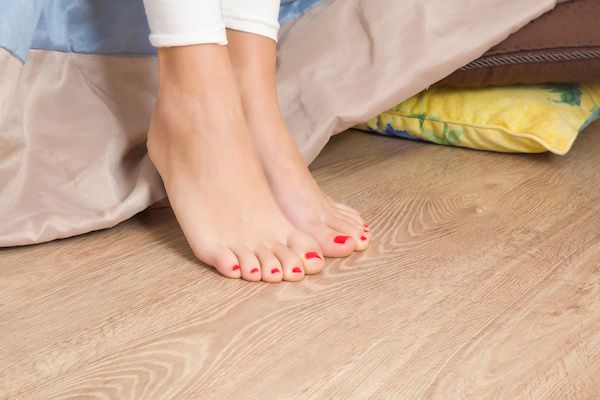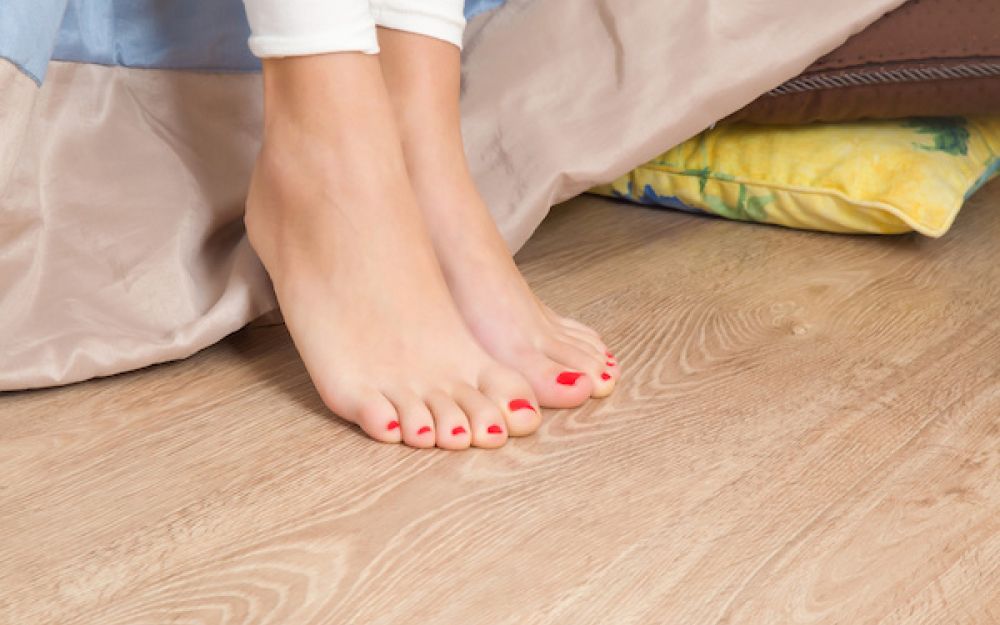Cold Floor Relief in the Home: Causes and Solutions


A cold floor may seem harmless, but it’s a sign that something isn’t right in your home.
Pinpointing the causes will help you choose a long-term solution to ensure your household is comfortable all year round. If not, you’ll be uncomfortable and potentially put your household at risk.
Sounds like your situation? Luckily, we’re here to help. Here are the common solutions and causes of a cold floor.
Common Causes of Cold Floors
Before brainstorming ideas for cold floor relief, it’s important to know why it’s happened. Often, chilly floors are a result of cold air sinks, which means the floor systems are closest to the exterior and aren’t sealed.
When cold air seeps into the area and warm air rises, heat escapes through the ceiling or crawlspace if it hasn’t been insulated. This is also called the “stack effect”.
Many homes with a basement often suffer from cold floors. Because of the wide-open space, chilly air has room to flow and cool your floors from underneath. You’ll notice that this is common in unfinished basements.
Further, poor insulation is a major culprit. If you live in an older property, there’s likely little to no insulation, so it won’t retain heat. A good rule of thumb is to hire a contractor to evaluate the property and figure out whether you need new insulation.
Quick Fix Solutions
Homeowners who have noticed that their floor is cold should look into long-term solutions. But if you need a quick fix before you arrange a crawlspace inspection, there are several to take on board. For instance:
Use a Space Heater
If you answer “always” to “is your floor cold?”, then you should try space heaters.
Sure, they may not be energy-efficient, but you’ll feel more comfortable and prevent drafts. But make sure you unplug the heater, especially if you’re leaving the room, because they should never be left unattended.
Inspect Your HVAC System
If your floors are often cold, hire an HVAC professional to inspect your system. This is essential for 10-year-old systems because they’re notoriously less efficient. You’ll be surprised at how much heat is lost when a component is faulty or the system is outdated.
Install Thermal Curtains
Another way to tackle cold floors is by installing thermal curtains. Although it’s only a short-term fix, these prevent drafts and create a consistent temperature throughout your home. However, if you notice a permanent draft, seal the windows and you’ll fix those pesky air leaks.
Permanent Solutions
The only way to stop cold floors forever is by investing in permanent solutions. There may be a larger upfront cost, but it’ll fix the root of the problem and ensure that you’re comfortable in your home. Here are the popular options.
Invest in Crawl Space Encapsulation
Most professionals will recommend crawl space encapsulation. Note this refers to the area underneath your home, similar to a basement.
During the process, a professional lines the crawl space with a vapor barrier, which is often made from heavy-duty polyethylene. This creates a dry buffer that stops moisture and unwanted pests from entering the space. Don’t worry if you discover a huge amount of moisture because you can use a dehumidifier to remove excess moisture from the air before the installation starts.
Insulate Your Home
Another effective method is insulating your property. The simple process protects your home from uneven temperatures so that none is lost through the floor. It’ll also save you a fortune in energy bills, especially in the winter, because it traps the heat.
And while you’re at it, invest in crawl space insulation, and you’ll never worry about cold floors again.
Air Seal Your Home
Air sealing boosts the efficiency of your insulation because it stops leaks. Both work together to create an effective thermal barrier, so you needn’t worry about cold floors. A bonus is that it improves the air quality in your home and lowers humidity levels, which often results in dampness.
You’ll be surprised at how many potential leaks there are in your home, whether it’s through the doors or in the attic. If you notice any signs, contact a credible contractor who can evaluate your situation and recommend the best solution.
Change to Carpet Flooring
Many homeowners love the look of hardwood or ceramic tiles, but they aren’t the most insulated. This is a wake-up call for households who live in cold climates because you’ll spend more on heating to combat cooler floors.
Instead, choose a warmer flooring option like carpet. Make sure that high-foot traffic areas are covered in a thick material because they have a better insulation value.
Install a Radiant Heating System
Investing in a radiant heating system is a popular long-term solution. It acts by warming the room by directly heating the floor. But note it’s an intrusive process, and you must hire a professional to complete it.
Unlike other options on this list, installing a radiant heating system is far more expensive and is often used to supplement heating in tiled bathrooms or mud rooms.
Stay Warm With Our Top Cold Floor Solutions
Now you know the causes of a cold floor, it’s time to choose a solution that works for you.
There are many effective solutions to try out, such as crawl space encapsulation and insulating your property. Homeowners should also air-seal their house from top-to-bottom and choose a warmer flooring material that is better insulated.
If you’re in the VA & NC area and struggle with cold floors, we’d love to help you. Contact us here for more information.
